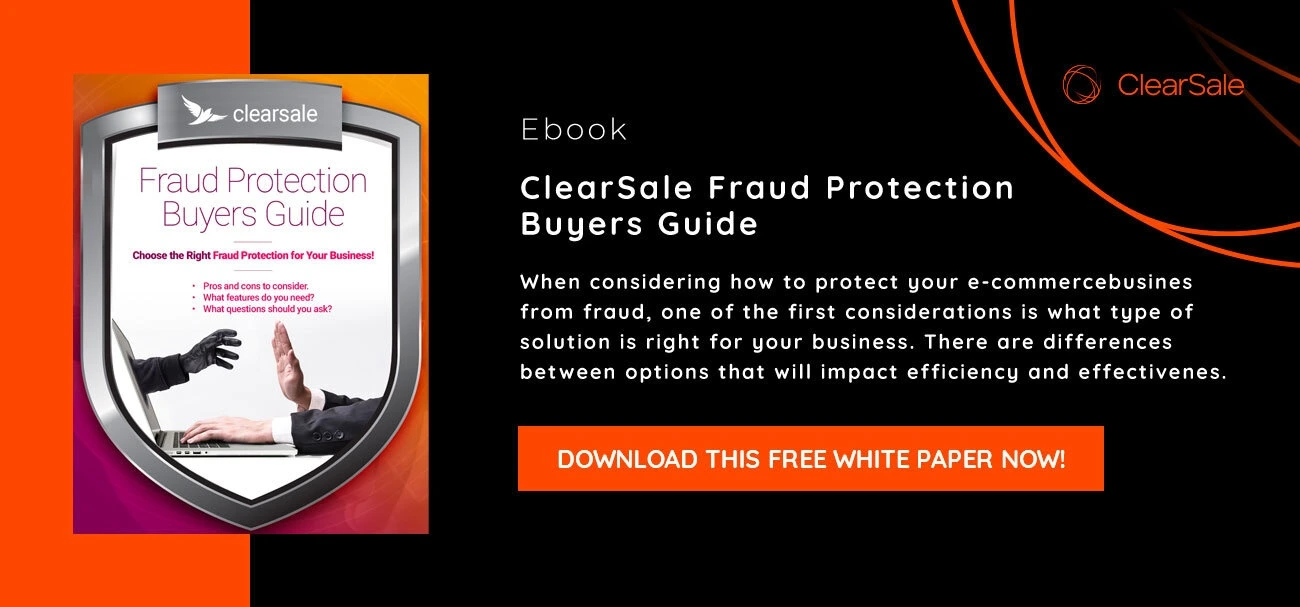Top 10 e-Commerce Fraud Myths
Customers enjoy the convenience of shopping online: No lines, great deals and delivery right to their doors. What’s not to love? Unfortunately, fraudsters are equally smitten with e-commerce. The frequent exchange of personal and financial data online means more opportunities for cybercriminals to steal sensitive information and defraud customers and retailers.
Fighting e-commerce fraud can be tricky, and it’s not made any easier by the sheer volume of conflicting information out there. To stay ahead of fraudsters, the first step for merchants is to become well-informed about credit card fraud and identity theft, so they’re not fooled by fraud myths like these:
Myth 1: Only Adults Are Vulnerable to Identity Theft
It seems logical. Adults have credit cards, mortgages and loans, and bank accounts — kids don’t. But children are actually 35 times more likely than adults to become victims of identity theft. Why? Because children aren’t applying for credit or opening up their own bank accounts, so there’s little need to routinely monitor their identity — meaning data theft can go undetected for years. Children’s clean credit history also lets fraudsters steal larger sums of money.
Myth 2: Using Digital Wallets Is Risky
Customers who are already skeptical of digital payments may be even more concerned about the security and privacy of mobile wallets. But payment options like Apple Pay, Google Wallet and Android Pay replace card data with one-time-use digital tokens. This means a credit card’s sensitive data is never stored on a customer’s mobile device or shared with a merchant. Because there’s nothing to steal from a digital wallet, these transactions are more secure than traditional credit card transactions.
Myth 3: Only Large e-Commerce Retailers Are Targets for Fraud
Many small e-commerce merchants believe their business is too small to attract fraudsters. But it’s actually smaller retailers that are most at risk. Trend Micro reported in 2012 that 65% of small businesses don’t encrypt or safeguard their sensitive or confidential business data — making them the perfect target for fraudsters.
Myth 4: Most Identity Theft Happens Online
Recent data breaches affected millions of consumers in 2017, leading shoppers to believe that the internet is where most identity theft takes place. However, more than half of identity thefts occur offline. Cybercriminals steal wallets, copy credit card numbers, and install skimmers at gas stations and ATMs — giving them all the information they need to create false identities and make fraudulent purchases.
Myth 5: All e-Commerce Retailers Are Equally Safe
Compare Amazon with a small online boutique. While both are concerned with customer safety, Amazon has the financial and staffing resources to implement a comprehensive fraud protection solution, while the boutique might be using only rudimentary fraud filters. Every online merchant should adhere to Payment Card Industry Data Security Standards to keep credit card data secure, but not every merchant has the staffing and financial resources to provide the same protection to customers.
Myth 6: International Transactions Are Inherently Risky
Many retailers automatically decline international transactions because of a perceived increased risk of fraud. In reality, some international transactions are safer than their domestic counterparts. Some Chinese luxury merchants have legitimate transaction rates above 98%, while the Miami-Fort Lauderdale area alone is home to 19 of the top 100 fraud-prone ZIP codes in the United States.
Plus, when merchants shy away from international markets, they miss out on valuable, legitimate sales to overseas customers: The cross-border market is expected to reach $900 billion in gross merchandise value by 2020.
Myth 7: The Fraud Rate Rises During the Holidays
Although it seems the number of fraud attempts increases during the holiday season, the fraud rate is actually 55% lower. While it’s true there are more cybercriminals trying to defraud retailers during the holidays, there’s also a significant increase in the number of legitimate transactions. The result? The overall rate of online fraud generally declines.
Myth 8: The Shift to Chip Cards Protects Against Online Fraud
The shift to EMV has meant that criminals are less likely to commit point-of-sale fraud using stolen or fabricated cards. But these chip cards offer no protection against card-not-present fraud. So it’s inevitable that as in-person transactions become more secure, fraudsters turn their sights toward more vulnerable targets: e-commerce retailers.
Myth 9: Fraudsters Target Only Expensive Items
While it’s true that expensive items are more attractive to fraudsters, price isn’t the only deciding factor. Fraudsters want to be able to steal, ship and resell items quickly, so their target items are generally items that are also small and lightweight — like smartphones, jewelry, designer purses and gift cards.
Myth 10: Rush Delivery Makes It Impossible to Combat Fraud
Customers increasingly expect orders to be delivered right away, which means merchants must process orders faster. Unfortunately, that reduces the amount of time merchants have to spend reviewing orders for e-commerce fraud. However, with the right fraud protection solution, merchants can still accurately screen orders without reducing fulfillment time.
How Online Retailers Can Defend Against e-Commerce Fraudsters
The line between truth and fiction isn’t always clear. But one thing is clear: No e-commerce retailer wants to fall victim to cybercriminals. So it’s important for merchants to implement effective fraud protection strategies that defend growing businesses without negatively impacting the customer experience.
Online merchants can ensure legitimate transactions are approved while fraudulent transactions are rejected by implementing a comprehensive fraud protection strategy that uses complex algorithms and human analysis to evaluate every purchase. The process is seamless to customers and lets merchants quickly fill orders and deliver outstanding customer service.
If your business is struggling with finding the right e-commerce fraud protection solution, download ClearSale’s new Fraud Protection Buyers Guide. We’ll walk you through the available options and even list the questions you need to be asking. The end result? You’ll find the solution that meets your needs and protects your customers.
 Sarah Elizabeth
Sarah Elizabeth
